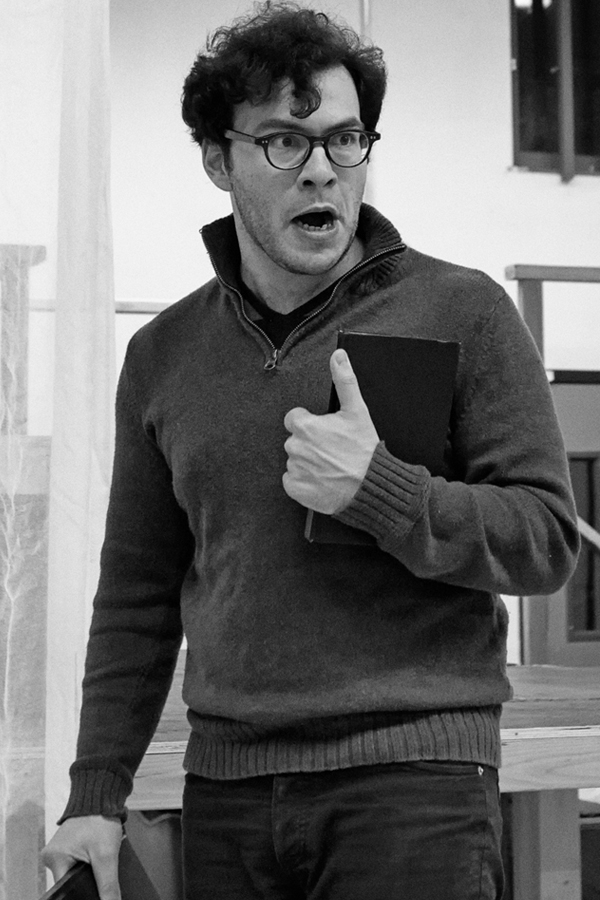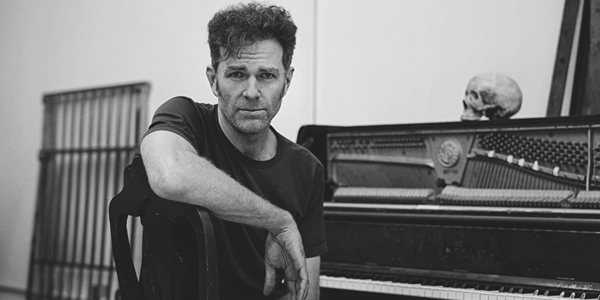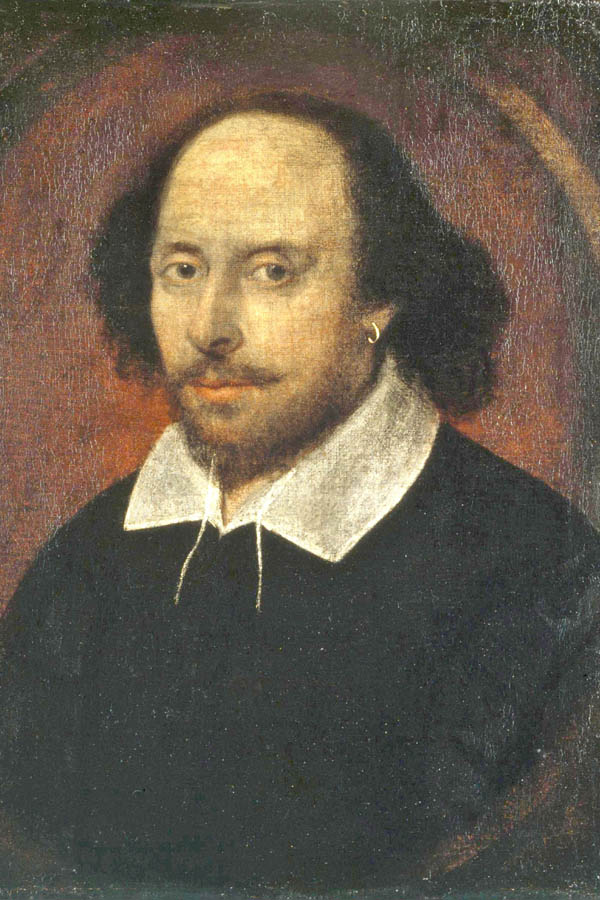
|
|||
|
|||
|
BEHIND THE SCENES OF HAMLET
Hamlet — Roulette Style  It is arguably the most famous play in Western literature. How to approach this iconic play? Director Mark Jackson presented us with an intriguing idea: to have the actors learn ALL of the parts in the play. Moments before show-time, the cast lines up before the audience to pull their roles for the night out of Yorick’s skull! They get 5 minutes to gather their wits and then the performance begins. Each night will have an entirely different cast. How does the perspective shift with a young woman playing Hamlet? Essentially, we are creating a mini-repertory with the cast of Hamlet – who will the take part in the other four productions this season. It’s a wildly ambitious way to start our next 25 years of theatre! It is arguably the most famous play in Western literature. How to approach this iconic play? Director Mark Jackson presented us with an intriguing idea: to have the actors learn ALL of the parts in the play. Moments before show-time, the cast lines up before the audience to pull their roles for the night out of Yorick’s skull! They get 5 minutes to gather their wits and then the performance begins. Each night will have an entirely different cast. How does the perspective shift with a young woman playing Hamlet? Essentially, we are creating a mini-repertory with the cast of Hamlet – who will the take part in the other four productions this season. It’s a wildly ambitious way to start our next 25 years of theatre!We’re here to do the play. Director Mark Jackson comments on his approach to Hamlet: “When a play is so widely familiar and beloved as Hamlet, its beloved familiarity can become a burden to those who feel left outside of its hallowed walls. Familiarity obstructs our individual and collective views of what else beyond our preconceptions might come of the play. The endless flood of diverse possibilities pouring out of Hamlet, might be far more interesting, surprising, and entertaining than any single vision. 
Our aim with this production is to create – each night! – not the Hamlet, but a Hamlet, that isn’t about how clever the star playing Hamlet will be with the famous lines and tropes. Rather, we hope to share a Hamlet, that embraces every one of us gathered in the theatre, in all our contradictory, various and evolving states of mind and body. Hamlet is someone’s child, friend, and lover. A poet, actor, politician, philosopher, athlete and student. Suicidal and life affirming. Prone to shortsighted decisions ad uncommonly insightful observations. Why not let all these Hamlets share the stage? They’re all in the house after all! During our October 2015 workshop for this production, actor Kevin Clarke nutshelled something about the cast’s task that also captured the underlying spirit of the production. ‘We’re not here to play any one role; we’re here to do the play.’ The process.  Usually with a Shakespeare production a director (sometimes working with a dramaturg) will edit the script far in advance of rehearsals. The cast is presented with an edited script on the first day of rehearsal. With our production, Mark Jackson led a series of workshops with the cast and they edited the script together. There was much spirited debate regarding the edits! They also coordinated the doubling of roles. As with Shakespeare’s original company, there are some roles with an actor portraying more than one part. All seven members of the ensemble invested much time poring over the text, suggesting edits, suggesting lines be put BACK, and discussing the many facets of all of the characters of Hamlet. Usually with a Shakespeare production a director (sometimes working with a dramaturg) will edit the script far in advance of rehearsals. The cast is presented with an edited script on the first day of rehearsal. With our production, Mark Jackson led a series of workshops with the cast and they edited the script together. There was much spirited debate regarding the edits! They also coordinated the doubling of roles. As with Shakespeare’s original company, there are some roles with an actor portraying more than one part. All seven members of the ensemble invested much time poring over the text, suggesting edits, suggesting lines be put BACK, and discussing the many facets of all of the characters of Hamlet.Regular rehearsals began in February. Many rehearsals were “round robbin” style. Basic blocking was coordinated and the cast would rehearse with each person assigned a role. After running the scene once, all cast members would switch to another role. The scene would be repeated a total of seven times, so that each actor rehearsed all of the parts. It was a fascinating – and inspiring process! The entire cast offered insights and learnings about all of the characters – a truly collaborative process. Prior to each performance, since the cast will not know which part they are performing, there will be an extended “fight call” to rehearse the duel between Hamlet and Laertes. Each actor will practice both parts for the duel each night. Literally no two performances will be alike! That is why we are offering a “Hamlet 3 Way”: 3 tickets to our production of Hamlet – because you will be eager to see this radical approach to Hamlet more than once! The story begins Written in 1601, Hamlet remains one of the most famous tragedies of all time. There are in fact three versions of Hamlet. There were two quartos (individual copies) published; the first quarto published in 1603 and the second quarto in 1604. The first quarto is often referred to as “the bad quarto;” scholars believe it may have been created from an actor in Shakespeare’s company who did not remember the lines very well. The famous “To be or not to be” speech in the bad quarto reads: “To be or not to be, I there’s/the point/ To die, to sleepe, is that all?/I all/No to sleepe to dreame, I/marry there it goes.” The third version is included in the Folio published in 1623. As the story begins, Hamlet has returned from school after the death of his father. Shortly thereafter, his mother, Gertrude, marries his uncle Claudius; and Claudius takes over the rule of Denmark. An apparition in likeness of old King Hamlet appears and reveals that he was murdered by Claudius. Within the setting for a classic revenge tragedy, Shakespeare’s play departs from other revenge tales that were popular in his day. In fact, within Hamlet Shakespeare provides several examples of revenge characters that contrast strongly with our tragic hero. A stereotype that exists about the character of Hamlet can be found in the opening to Laurence Olivier’s 1948 film in which we hear that famous voice declare: “This is the tragedy of a man who could not make up his mind.” But is it? Fintan O’Toole, author of No More Heroes: A Radical Guide to Shakespeare writes: “What Shakespeare gives us is not a slob or a shirker, but a man of action (the man everyone turns to at the start of the play when there is a crisis…the man who has a few scruples about killing those he sees as threatening him) who is concerned with how, not whether, to perform the task.” Alas, poor Shakespeare, I knew him….  In Hamlet there is a famous scene with the Gravedigger. He gives a skull to Hamlet, and reveals that the skull belonged to Yorick, the King’s jester. Hamlet says: “Alas, poor Yorick, I knew him Horatio…” In Shakespeare’s time, it was common for graveyards to become overcrowded. Old skeletons were removed to make room for the newly deceased. So it is with the Gravedigger in Hamlet – he is making room for Ophelia and removes the skull of Yorick. Shakespeare was of course well aware of this custom, and feared he might meet the same fate as Yorick. He gave orders for the following to be inscribed on his gravestone: In Hamlet there is a famous scene with the Gravedigger. He gives a skull to Hamlet, and reveals that the skull belonged to Yorick, the King’s jester. Hamlet says: “Alas, poor Yorick, I knew him Horatio…” In Shakespeare’s time, it was common for graveyards to become overcrowded. Old skeletons were removed to make room for the newly deceased. So it is with the Gravedigger in Hamlet – he is making room for Ophelia and removes the skull of Yorick. Shakespeare was of course well aware of this custom, and feared he might meet the same fate as Yorick. He gave orders for the following to be inscribed on his gravestone:“Good friend, for Jesus’ sake forbear, To dig the dust enclosed here. Blessed be the man that spares these stones, And cursed be he that moves my bones.” For over a century there has been a rumor that someone ignored this curse and disturbed the burial place of the Bard. Just last week – an archeologist used a radar scan at Shakespeare’s tomb and found that his skull appears to be missing. |








